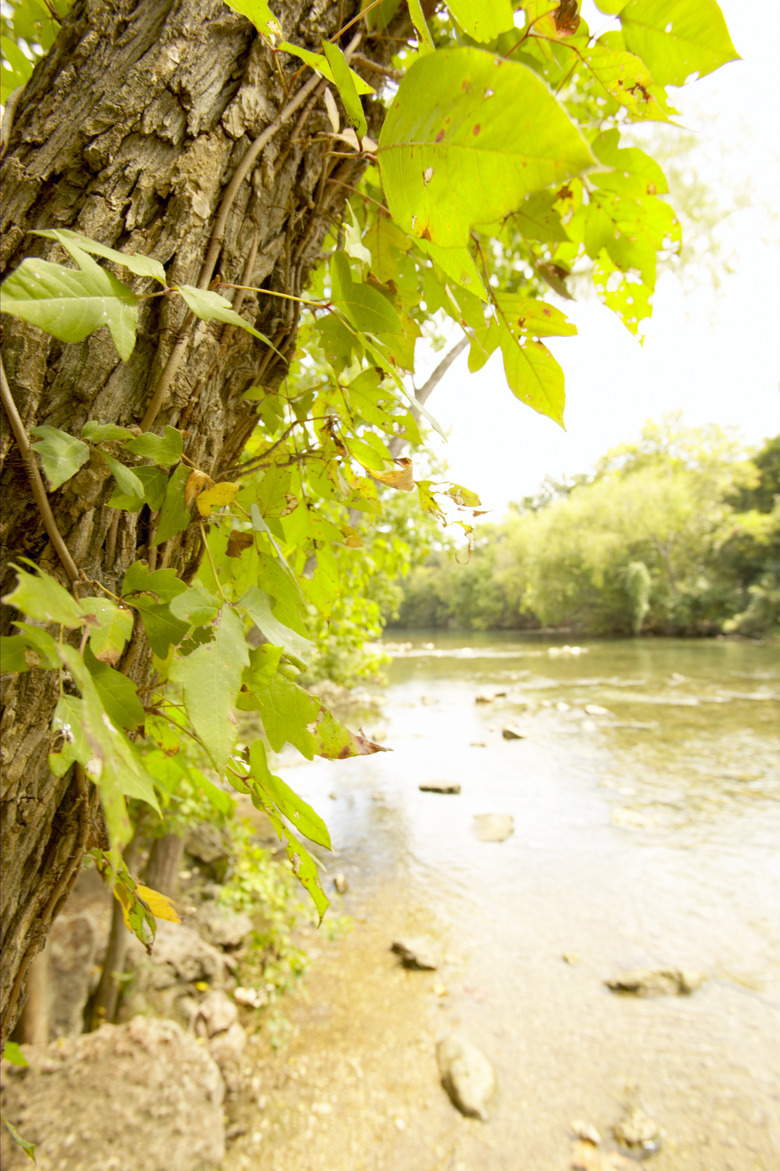Poison Ivy Reproduction
Poison ivy is a perennial woody weed that is native to North America. It is most frequently observed in disturbed sites along roads, railroads and canal rights-of-way. It is also quite common in woodlands, floodplains, rocky slopes and lake shores. It prefers sites with moderate levels of sunlight and soils with high calcium content. Poison ivy reproduces by seeds, which are readily dispersed by animals and birds, and by creeping roots. Consequently, look for this plant at the base of trees, edges of woods and along fence rows, where birds perch and nest.
Identification
Poison ivy is a spreading plant with highly variable leaf shapes that are generally oval in outline. Plant form can be low-growing, upright and bushy or vine-like. Leaflets are commonly asymmetrical, lobed on one side but not the other. Older leaves may be either toothed and lobed or untoothed and lobed. Leaves are divided into three hairless leaflets that are approximately 1 to 4 inches in length. In the fall, the leaves will turn red or purple. Plants produce small, visually appealing white berries in clusters.
- Poison ivy is a perennial woody weed that is native to North America.
- Poison ivy reproduces by seeds, which are readily dispersed by animals and birds, and by creeping roots.
Sexual Reproduction
Numerous flowers in dense clusters appear on plants from May through July. Single seed-containing white berries form in the fall, remaining on the plant through the winter. Poison ivy berries are small, ridged, hard and round. More than 50 species of birds are known to consume the rind of the berry. The plant seeds are able to pass through the digestive system of the birds unharmed. Unconsumed berries will drop from the plant in the spring. New plants will form where seeds are dispersed through the digestive systems of birds and near parent plants where dropped berries fall.
- Numerous flowers in dense clusters appear on plants from May through July.
- New plants will form where seeds are dispersed through the digestive systems of birds and near parent plants where dropped berries fall.
Vegetative Reproduction
Poison ivy has a fibrous root system that is capable of rooting wherever it comes in contact with the soil. Stems are woody and will climb, attaching to other objects and vegetation or trailing on the ground, using aerial roots. New stems will emerge from buds at the nodes of rootstocks. Poison ivy roots may extend as much as 7 feet from the parent plant. While vegetative reproduction is slow, over time it can result in dense thickets of the species under favorable conditions.
Control
The recommended method of control varies by location and the degree of infestation. Poison ivy found in natural areas provides a valuable food source to many types of birds. It should be allowed to remain if there is little perceived threat to people. Otherwise, consider mowing, cutting, cultivating or covering the plant with mulch. Mechanical extraction is most successful in wet soils after repeated attempts, where the spread of the plant is fairly limited. If the plant lacks leaves for a sufficient amount of time, the root system will starve and the plant will die. Herbicides such as glyphosate, amitrole, 2,4.D and triclopyr are also effective chemical means of control, and they may be used in combination with mechanical means of extraction.
- Poison ivy has a fibrous root system that is capable of rooting wherever it comes in contact with the soil.
